Top Robotic Lawnmowers: Comparing the Best in the Market
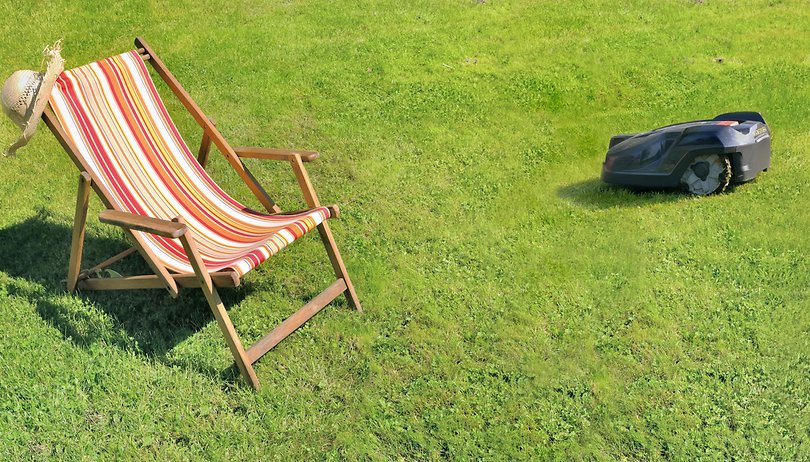

Do I want to mow the lawn by hand, or will I finally buy a robotic mower this year? Do I purchase a robotic lawnmower with a boundary wire or one without? Thousands of garden owners ask themselves this question every year when spring comes around. With smart robotic lawnmowers, you can trade hours of backbreaking yard work, the smell of gasoline, and noise for spare time. nextpit helps you find the best robotic mower for your yard.
Do I get a robotic mower with or without a boundary wire?
Basically, there are two different classes of robotic lawnmowers: Robotic mowers armed with boundary wires and robotic mowers without boundary wires. Arriving at a decision mainly carries practical and financial implications.
- Robotic mowers with a boundary wire are complex to set up. You have to lay a wire either on or just under the lawn and, if necessary, pull a second guide wire. This takes time and cannot be flexible. For example, should you decide to enlarge your lawn by removing a bed, you will have to lay the cable again. On the other hand, you have plenty of choices when it comes to robotic mowers that cost less than $1,300.
- Robotic mowers without a boundary wire usually rely on cameras, GPS, beacons, or a combination of those to find their way around your garden. The setup is uncomplicated, and expanding the area to be mowed can be performed within a few minutes. However, robotic mowers without boundary wires are also significantly more expensive, and you will practically be unable to find any models that retail for less than $1,300 at the moment.
You can jump straight to a selection from the respective product category below and to our general buying guide for robotic mowers.

Robotic lawn mowers with boundary wires under $1000 compared
At nextpit, we're in the process of talking about robotic lawnmowers in greater depth, so please bear with us as we haven't reviewed many of these home improvement tools to date. Among the robotic lawn mowers with a boundary wire that we have reviewed, only the Gardena Sileno City 600 (review) left a positive impression on us apart from the principally laborious setup.
The other three models in this comparison all rely on a cable for navigation and offer WLAN and Bluetooth for connectivity. While the robotic mowers from Gardena and Worx are also suitable for hilly gardens, the models from Bosch and Husqvarna feel more at home on flatter terrain.
Have we forgotten an important model? And which robotic mower should we definitely review next? Please let us know in the comments!
From $1,300: Robotic lawn mowers without boundary wires compared
| Editor's choice | The best app | Value alternative | Sci-fi vibes | |
|---|---|---|---|---|
| Picture | 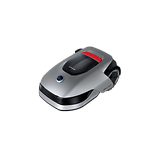 |
 |
 |
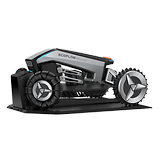 |
| Review |
|
|
|
|
| Surface area |
|
|
|
|
| Maximum gradient |
|
|
|
|
| Noise level |
|
|
|
|
| Battery life |
|
|
|
|
| GPS |
|
|
|
|
| Connectivity |
|
|
|
|
| Other features |
|
|
|
|
| Dimensions (L x W x H) |
|
|
|
|
| Weight |
|
|
|
|
| Offer |
|
|
|
|
This category of robotic mowers without boundary wires is still relatively new, at least when it comes to private use. However, they are starting to change the market landscape (sorry, could not resist that!). Companies such as Segway, Ecoflow, and Ecovacs have dipped their toes into the robotic lawnmower market, and are doing their utmost best to disrupt the established brands.
However, while it is crystal clear that robotic lawnmowers without boundary wires are more convenient to use, they are currently still significantly more expensive than models sans boundary wires. Hence, the different approaches to handle navigation around the lawn.
The Worx model, for instance, relies on a lawn sensor for orientation and thus drives over everything that it recognizes as a lawn. In addition, a camera is also installed to detect obstacles, just like in the Navimow H500W from Segway.
Only the larger Navimow models starting with the H800W also offer an integrated GPS module. There's also the new Ecovacs Goat G1 which relies on GPS and beacons for navigation, as well as a camera for obstacle detection.
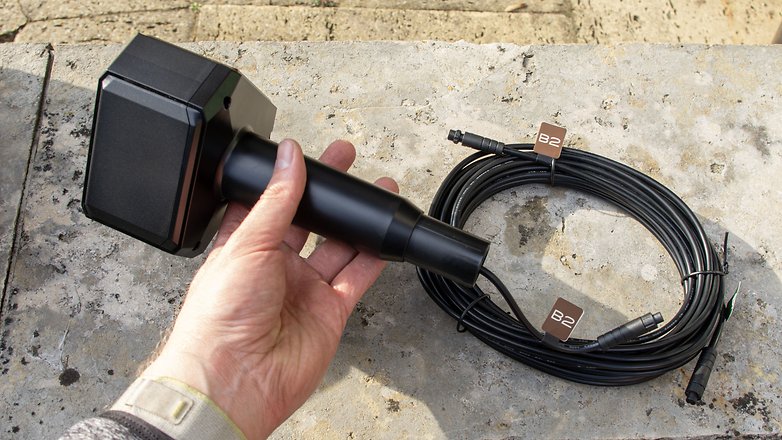
The Ecoflow Blade also relies on an integrated GPS antenna. For more precise positioning in the garden, you will also need to place an antenna. We already had the opportunity to do so in our hands-on of the Ecoflow Blade. Read our thoughts on just what this wonderful robotic lawnmower is capable of.
And then there is the new Ecovacs Goat G1, which was just launched. It not only relies on GPS for navigation purposes, but also on an entire series of beacons and a camera for obstacle detection. At €1,599, the Goat G1 is far more affordable than the Blade. You can read why Ecovacs' first robotic lawnmower convinced us in our detailed Goat G1 review.

Der Ecovacs Goat G1 ist ab sofort bei Amazon erhältlich.
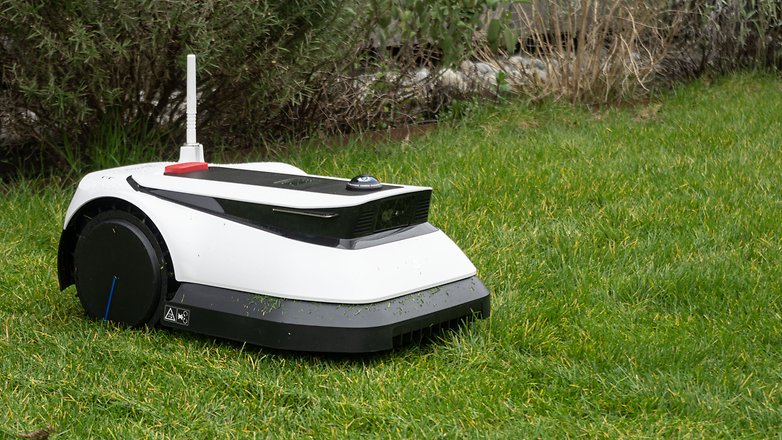
Buying advice: What's important in robotic lawnmowers
The reasons for buying a robotic lawn mower instead of a conventional lawn mower are obvious, especially when you own a larger garden. These robots not only save you time but are also usually cheap to maintain despite the high initial cost. Of course, operating costs also depend on the price of electricity, but they are usually no higher than traditional lawnmowers which also require electricity or even gasoline to run.
In the case of gasoline, there are the added advantages of lower emissions and not having to burn fuel to keep your garden looking great, even though the electricity you use often does not come from a renewable source, either. There is also the advantage of not having to smell gasoline in the house and a final, critical aspect: noise.
Gasoline-powered lawn mowers can produce a volume of around 85 to over 100 decibels, which can not only damage your hearing if you're not wearing protective gear but also ruin relationships with your neighbors. Robotic lawnmowers, on the other hand, often have a noise level of about 60 dB, which is comparable to a normal conversation.
Battery life and area
If you don't have a garden the size of a soccer field to mow but rather, a city garden, the vast majority of robotic mowers should be sufficient for you. Most models can mow a lawn area of at least 4300, 5400 square feet (400 to 500 m2). If you do happen to have a large field to mow, you can normally find models with a longer range in the manufacturers' product families.
There's also another factor to consider especially for narrow gardens: to check whether the set boundaries and the placement of the charging station allow the robot to work properly and return to the dock. Narrow hallways, for example, can restrict the robot's movements, so do refer to the machine's owner's manual to see what the minimum widths are when setting the boundary.
Maximum incline
One limitation that might concern some buyers is the maximum incline that the lawn mower can handle. If your yard has slopes, the robot may not be able to climb them safely, so be sure to check the terrain capability before you buy. Steep inclines can be avoided using the boundary wire, but then you will have to do it yourself. Alternatively, you can always build a boundary from concrete.
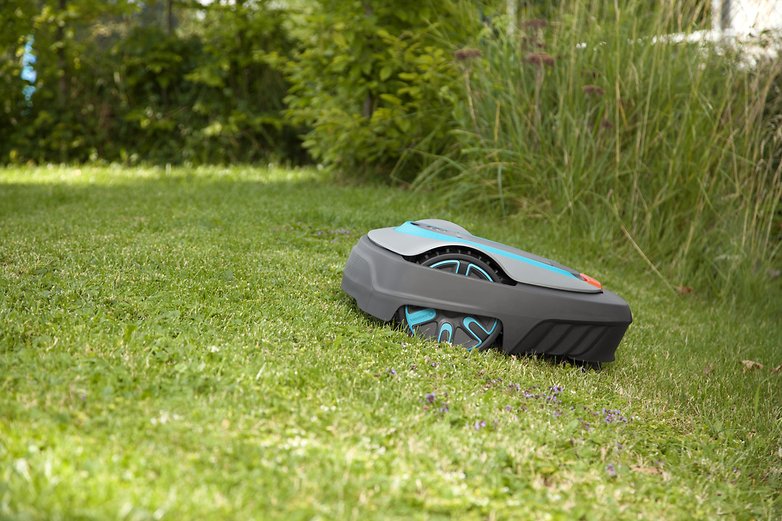
Safety features
When working outdoors, the expensive lawn mower is also exposed to a risk of theft. That's why many models have anti-theft features such as a PIN code or an alarm that goes off as soon as the robot ventures outside of its confined area. Some models can even be equipped with an optional GPS locator that connects to mobile networks to locate and lock the device. The Goat G1 is one such example with built-in GPS.
Smart features on most robotic lawnmowers include collision sensors that not only prevent collisions with pets and obstacles but also lift sensors that prevent accidents when someone lifts the robot. After all, rotating blades can be dangerous. Some robotic mowers also offer safety features to protect animals via object detection by using an integrated camera or through a recommendation in the app regarding pet-friendly mowing times (definitely not for use at night!).
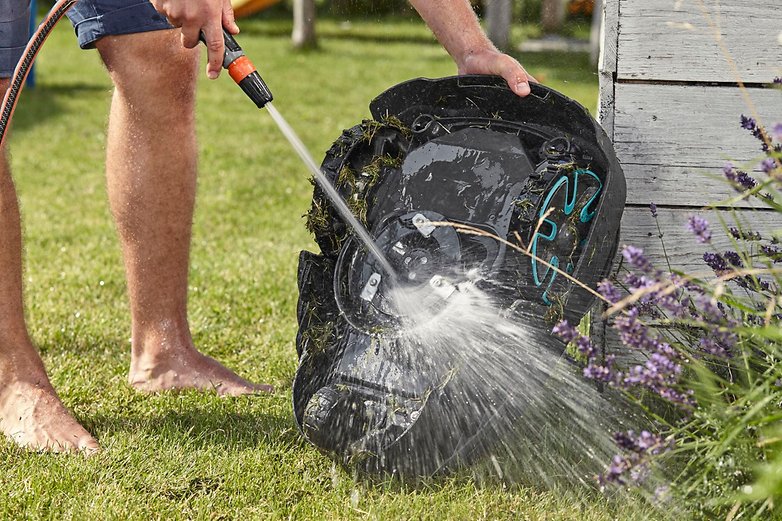
Accessories
When you buy a robotic lawnmower you usually get the robot, a charging station, and the accessories that are absolutely necessary for operation, such as a perimeter wire and charging station(s). However, various other things will make life easier for you or your robotic lawnmower.
Robotic lawnmower garage: Probably the most popular and sensible investment is a garage for your robotic lawnmower, which protects your self-propelled lawnmower from rain and the like. Your garden will also look much tidier with the right robotic lawnmower garage. However, bear in mind that some robotic lawnmowers have a rain sensor on the top that postpones the next mowing date if the weather is suitable—this will of course no longer work correctly with a garage.
External rain sensor: For some robotic lawnmowers, separate rain sensors are available as accessories from the manufacturer, for example from Gardena. This is useful if you use a garage as mentioned above—or if your robotic lawnmower's station is located under a canopy or a large tree.
Robotic lawnmower blades: The vast majority of robotic lawnmowers rely on a rotating disk to cut the lawn, to which several movable blades are attached. These resemble small razor blades—and eventually become blunt. You can then either sharpen the blades by hand or simply replace them.
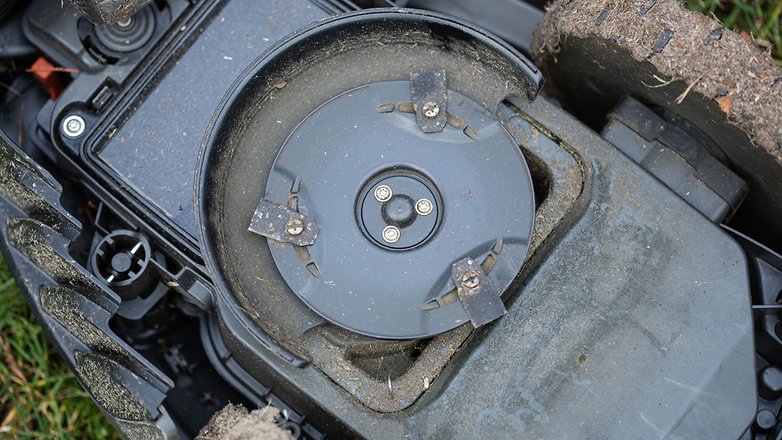
Care and maintenance
Even though robotic lawnmowers can work on rainy days, some experts advise against mowing wet grass and recommend turning the device off. Also, most manufacturers suggest regular cleaning to remove grass clippings and debris from the blades.
Be sure to check the owner's manual to find out if the unit can be cleaned using a hose or high-pressure washer. High water pressure can also cause water to penetrate sealed housings and damage the electronics inside. Make sure charging contacts are clean as well to avoid extended charging times and excessive energy consumption.
Also, review the recommended steps for mothballing the robot during the winter. These typically include thoroughly cleaning the unit, charging the battery, turning off the unit, and storing the robot in a dry place. In particular, a dead battery is critical, as this is where the cells age rapidly.
Also remember that there are probably some areas that will need to be mowed without the robot, such as areas around the edges of the perimeter zone, around some obstacles, or around steep slopes.
- Also interesting: The best robot vacuum cleaners compared
That's it for our quick guide to robotic lawnmowers. Are you interested in this product category? Are you expecting more "smart" features in this area? Please let us know what you think in the comments. If you're looking for more ways to make your garden and home smarter, check out our other guides!
Article updated in February 2024 with new suggestions, updated pricing, and a chapter for accessories.

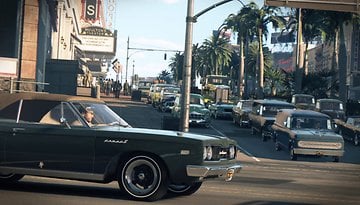
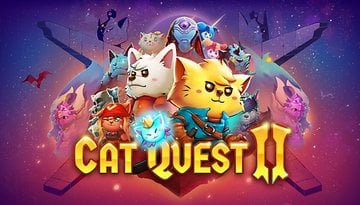











For the most part in the US, we should just rethink lawns. They are death sinks full of water and chemicals, don't support wildlife habitat or bio diversity. We can save labor, have better environments and reduce the chemical and water waste. And no leaf blowers blowing cut grass everywhere with all the noise and mess.